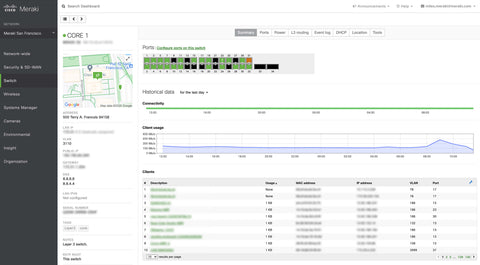Introduction
In today's digital landscape, network downtime can have significant consequences for businesses, leading to lost productivity, revenue, and customer trust. Designing a resilient network architecture is essential to minimise disruptions and ensure continuous connectivity. In this guide, we will explore best practices and key considerations for designing a resilient network architecture. By following these guidelines, you can create a network infrastructure that is robust, fault-tolerant, and capable of withstanding unexpected challenges.
- Redundancy:
Implement redundancy at various levels of your network architecture. Redundant components, such as routers, switches, and power supplies, ensure that if one device fails, another can seamlessly take over. Redundant network links and connections further enhance fault tolerance by providing alternative paths for data to flow in case of a link or equipment failure.
- Network Segmentation:
Segment your network into separate subnets or VLANs based on logical grouping, such as departments, functions, or security requirements. This segmentation improves network security and containment by isolating potential issues to specific segments, preventing them from affecting the entire network.
- Load Balancing:
Distribute network traffic across multiple paths using load balancing techniques. Load balancers intelligently distribute incoming requests across multiple servers or network links, ensuring optimal resource utilisation and preventing any single component from becoming overwhelmed.
- Scalability:
Consider the future growth and scalability of your network architecture. Plan for expanding the network to accommodate increasing bandwidth requirements, additional devices, and emerging technologies. Scalable network design ensures that your infrastructure can adapt to evolving business needs without compromising performance or resilience.
- Network Monitoring and Management:
Implement comprehensive network monitoring and management tools to proactively identify and address potential issues. Monitor network traffic, device performance, and security events to detect anomalies or signs of impending problems. Timely identification and resolution of issues help prevent major disruptions and maintain network resilience.
- Security Considerations:
Integrate robust security measures into your network architecture. Implement firewalls, intrusion detection systems, and encryption protocols to protect against unauthorised access, data breaches, and network attacks. Regularly update security policies and practices to stay ahead of evolving threats.
- Disaster Recovery Planning:
Develop a robust disaster recovery plan to handle unexpected events that may impact network availability. Identify critical components, establish backup and recovery procedures, and regularly test the effectiveness of your disaster recovery plan. Off-site data backups and redundant network connections are crucial elements of a comprehensive disaster recovery strategy.
- Regular Maintenance and Updates:
Perform regular maintenance, updates, and patch management to keep your network infrastructure secure and reliable. Stay current with firmware upgrades, software patches, and security fixes provided by vendors. Regularly review and update network documentation to ensure accurate information for troubleshooting and future enhancements.
- Documentation and Diagrams:
Maintain thorough documentation of your network architecture, including network diagrams, IP address assignments, device configurations, and network policies. This documentation serves as a valuable reference for troubleshooting, network audits, and future expansion or modification projects.
- Training and Expertise:
Invest in the training and development of your network team to ensure they possess the necessary skills and expertise to design, implement, and maintain a resilient network architecture. Encourage continuous learning and certifications to keep up with emerging technologies and best practices.
Conclusion
Designing a resilient network architecture is crucial for maintaining business continuity and minimising disruptions. By implementing redundancy, network segmentation, load balancing, and scalable design, you can enhance fault tolerance and ensure seamless connectivity. Complementing these practices with robust security measures, disaster recovery planning, regular maintenance, and well-documented procedures will further strengthen your network's resilience. By following these best practices and considerations, you can build a network infrastructure that supports your business goals, withstands unexpected challenges, and provides a reliable and secure communication platform for your organisation.



